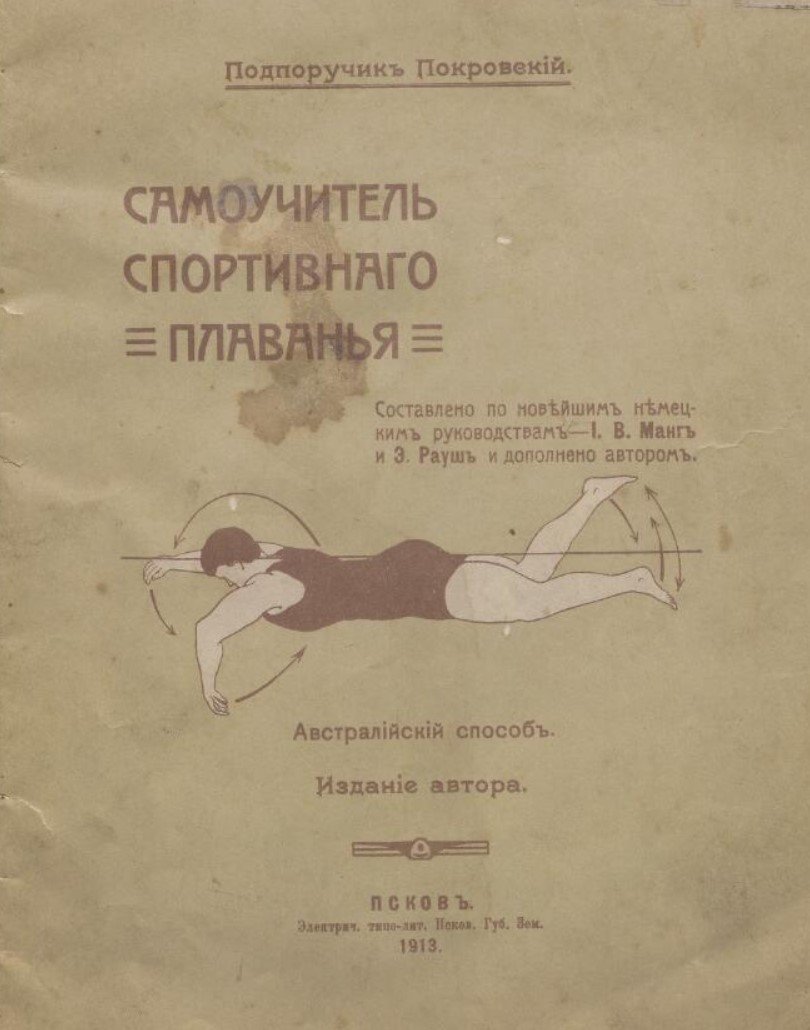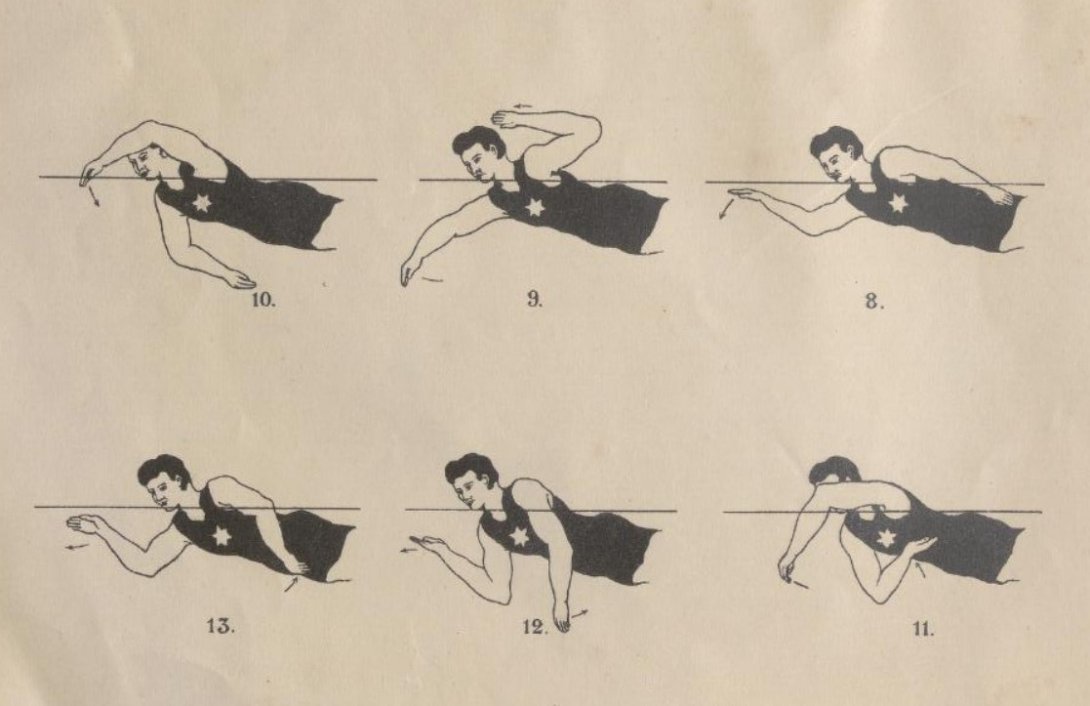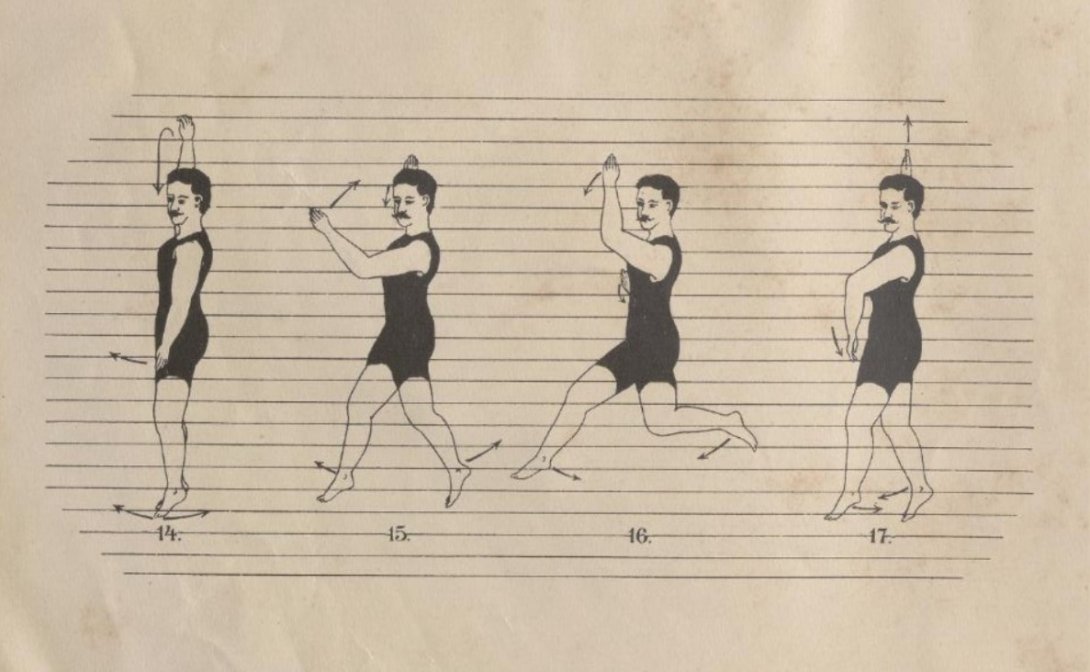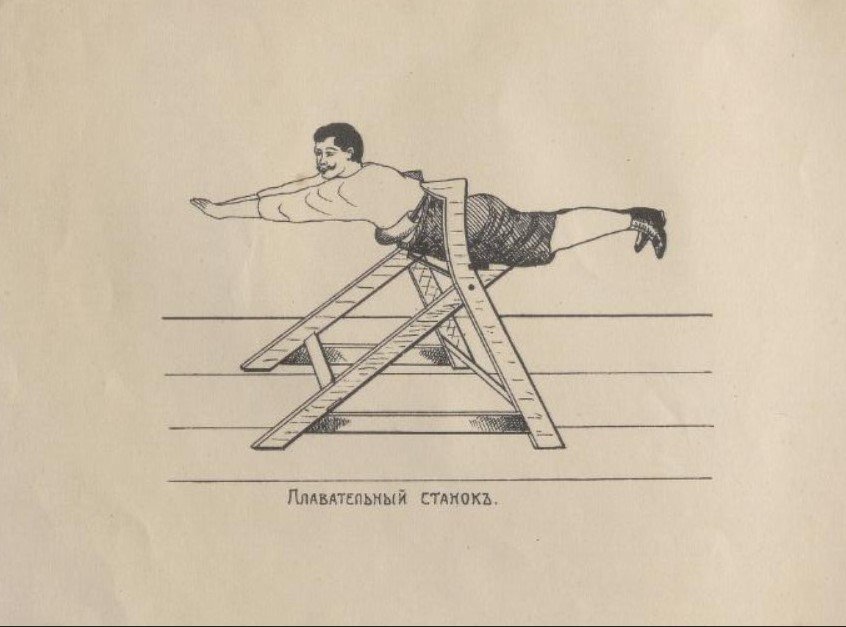
A copy of a Russian brochure on the 'Australian method' swimming style – also known as the Australian Crawl – has recently been added to our collection.
Explore the Russian brochure on the Australian Crawl in Trove

As Australians flock to the water to cool down over summer, the swimming style once known as the Australian Crawl – now more commonly referred to as 'freestyle' – will be used by many. This recently acquired Russian brochure, published in 1913, is probably the first detailed description of the style in Russia. The brochure's author, Lieutenant Pokrovsky, describes the swimming style which he says he learned from German tutorials. The brochure also includes a list of swimming results of the best in the ‘Australian method’, with the Australian Bill Longworth on the top of the list in 1911.

The Australian Crawl grew out of various front crawl swimming styles used by people from around the world for millennia. Swimming had gained in popularity as a competitive sport in the 1800s, with breaststroke reigning supreme for many years. In Britain it wasn’t until the 1870s that the Trudgen Stroke, an overarm style with a breaststroke kick, was promoted by Englishman Sir John Arthur Trudgen. This was further refined and popularised in competitive swimming in Australia where it became known as the Australian Crawl around the turn of the century. An early description of the style can be found in The Bookfellow in 1907. Historical debate rages about exactly who ‘invented’ the style, with most accounts pointing to the influence of the famous brothers, Richmond Cavill and Arthur 'Tums' Cavill, as well as Alick Wickham, a Solomon Islander living in Sydney.

In January 1911, the Australian championship 1,320 yards race was held at Sydney’s Domain baths. Against champion swimmers Frank Beaurepaire and Cecil Healy, the lesser-known Bill Longworth led the way to win with the Australian Crawl, proving that it was suitable for long distance races. Longworth went on to win all the NSW and Australian freestyle championships from 100 yards to one mile in 1912. He also qualified for the 1912 Olympic Games but withdrew due to illness.
